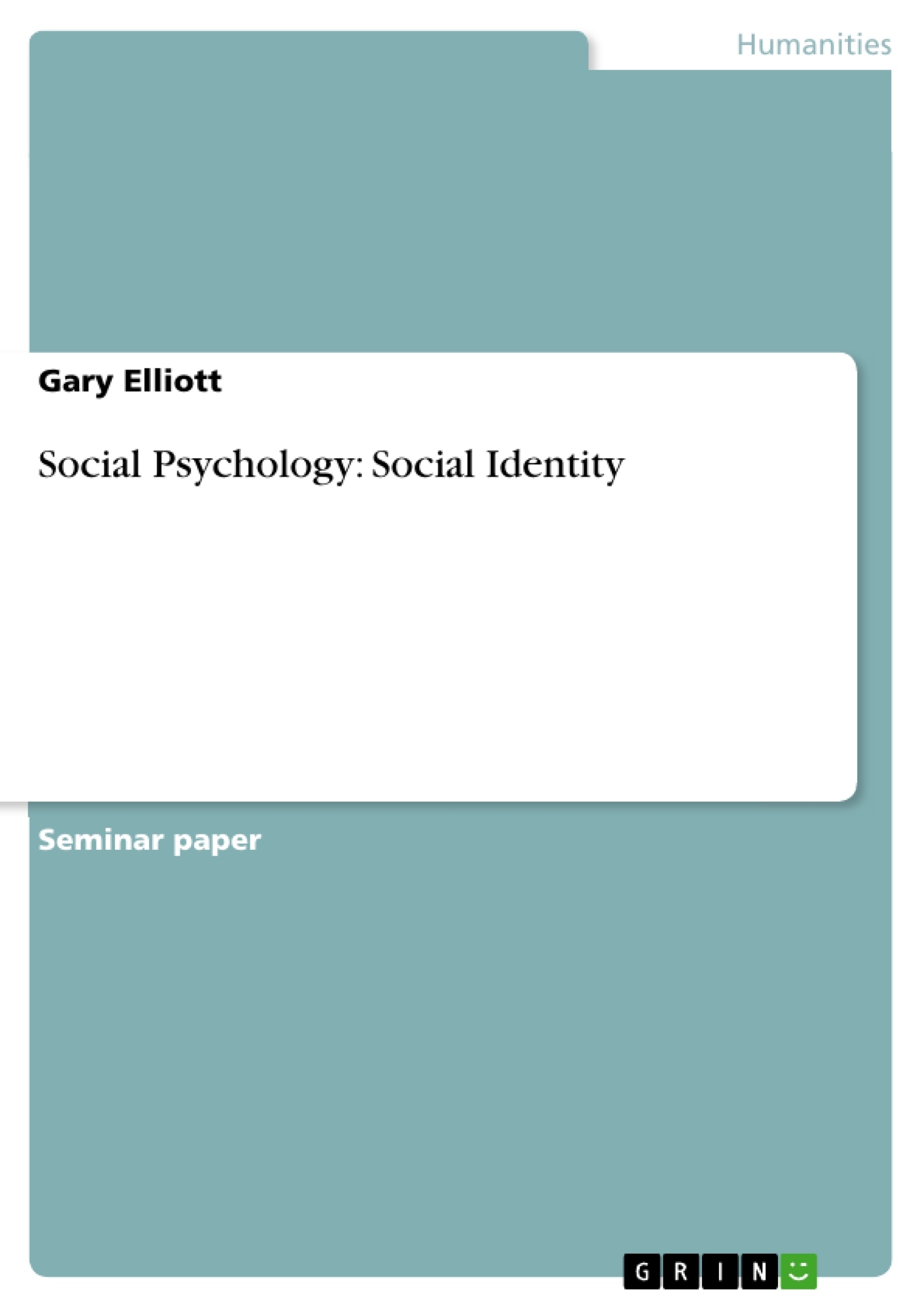The content of this paper discusses three separate, yet in my opinion, interlinked aspects of social development.
We begin with the concept of social identity, the development of one’s identity almost from birth, through adolescence into adulthood. The identity as a result of our interactions with those around us creates our self-concept and ultimately our self-esteem. Our gender and gender role development adds to our concept of self and determines our concept of who we are in relation to others and the world.
As we grow our interactions with those around us, commencing with the family unit gives credence to our understanding of our self-value. We learn about people’s perceptions of us through their dealings with us. As such, our self-esteem has the potential to promote or hinder healthy relationship development as we move through life from the core family relationships to our peer, significant other and spousal relationships. The success or failure of our relationships can be linked to our self-esteem. We learn about our self-perception, how others perceive us and what kind of responses we expect from those we come into contact with.
Dealing with our self-esteem as we move through life, suggests that interactions are tainted or coloured by a positive or negative self-concept respectively. We will see that perception is a key determinant in the generation of frustration when dealing with those around us. These frustrations are just one component of factors that may lead to the expression of inappropriate levels of aggression. We discuss other causes of aggression and ultimately seek to outline techniques that can assist individuals to create a less aggressive or more appropriate form of anger display.
As an educator, the focus of this paper has pertinence for the school environment but is not limited and moves beyond that into the world of work.
Inhaltsverzeichnis (Table of Contents)
- Introduction
- Social Identity
- Self-concept
- Self-Esteem
- Gender
- Gender Stereotypes and Identity
- Reactions to Gender-Role Behaviour
- Gender Role and Behaviour
- Interpersonal Behaviour
- Male vs. Female Self-Perceptions
- Relationships
- Family
- Friends
- Adult friends
- Adult love-relationships
- Marriage and the spouse
- Aggression
- Cause of aggression
- Social causes
- Personal causes
- Situational causes
- Control and prevention of aggression
- Cause of aggression
- Conclusion
Zielsetzung und Themenschwerpunkte (Objectives and Key Themes)
This paper explores the interconnected aspects of social development, focusing on social identity, self-concept, and aggression. It examines how these elements influence an individual's journey from birth through adolescence into adulthood. The paper emphasizes the impact of social interactions and relationships on the development of self-esteem and its role in shaping interpersonal behaviour.
- The development of social identity and self-concept
- The influence of gender roles and stereotypes on identity
- The relationship between self-esteem and interpersonal behaviour
- The causes and control of aggression in social contexts
- The application of these concepts within educational and work environments
Zusammenfassung der Kapitel (Chapter Summaries)
- Introduction: This chapter introduces the paper's scope and outlines the interconnected nature of social identity, self-concept, and aggression. It highlights the significance of social interactions in shaping an individual's self-esteem and how these factors influence their relationships and behaviour.
- Social Identity: This chapter defines social identity as an individual's perception of themselves and their relationship to others based on shared characteristics like race and gender. It explores the development of self-concept, highlighting the stages of subjective, objective, and symbolic self-awareness.
- Self-concept: This chapter explores the unique and shared aspects of self-concept, emphasizing the individual's belief and perception of themselves. It outlines eight key aspects of self-concept that contribute to our understanding of "who we are."
- Self-Esteem: This chapter explores the role of self-esteem in shaping our interactions and relationships, starting with family dynamics and extending to friendships, romantic relationships, and marriage. It emphasizes how self-esteem can influence our expectations and reactions in social contexts.
- Gender: This chapter delves into the influence of gender stereotypes and roles on individual identity. It examines the impact of gender-related behaviour and societal expectations on self-perception and interactions with others.
- Interpersonal Behaviour: This chapter examines the role of self-perception in interpersonal behaviour, focusing on the differences between male and female self-perceptions. It highlights how our perceptions shape our expectations and responses in social situations.
- Relationships: This chapter explores the impact of self-esteem on the development and maintenance of relationships. It examines the complexities of family dynamics, friendships, adult love relationships, and marriage, emphasizing the importance of self-esteem in navigating these interactions.
- Aggression: This chapter explores the causes of aggression, analyzing social, personal, and situational factors that contribute to aggressive behaviour. It delves into the development of frustration and anger, exploring their impact on social interactions.
- Control and Prevention of Aggression: This chapter focuses on techniques and strategies for controlling and preventing aggressive behaviour. It emphasizes the importance of understanding the root causes of aggression and developing effective methods for managing anger and frustration.
Schlüsselwörter (Keywords)
This paper focuses on the themes of social identity, self-concept, self-esteem, gender roles, interpersonal behaviour, relationships, and aggression. It explores the interplay between these concepts and their influence on individual development, particularly in the context of social interactions and relationships.
- Quote paper
- Gary Elliott (Author), 2013, Social Psychology: Social Identity, Munich, GRIN Verlag, https://www.grin.com/document/275085



